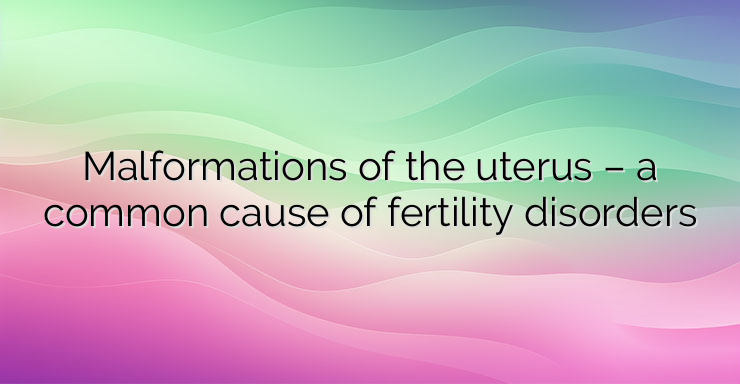A septate uterus is the most common abnormality or malformation of the uterus. This can be an obstacle to pregnancy, but is easily and successfully treated surgically. What is a septate uterus? In a septate uterus, the uterine cavity is completely or incompletely divided into two parts by a septum. The septum that divides the uterus into two should be more than 5 millimeters, if it is smaller it is considered a normal condition. Causes Uterine malformations are caused by an interruption in the development of the female reproductive organs during intrauterine development. In the case of a septate uterus, this developmental interruption occurs during the formation of the Mullerian ducts, which give rise to the uterus, fallopian tubes, and upper vagina. It can also cause the so-called Rokitansky syndrome – absence of uterus and vagina, which is more serious but much less common. Symptoms When the uterus is divided into two by a septum, major disturbances are observed in fertility. Septated uterus favors: Miscarriages; Premature birth; Difficulties in birth – there is a greater risk of the baby being born breech or in other positions – such as transverse, which make birth difficult. Outside the period of pregnancy, the symptom that a septate uterus can cause is mainly dysmenorrhoea – severe menstrual pain, although most of the time it remains somewhat asymptomatic. Diagnosis The uterine septum is easily diagnosed by two-dimensional or three-dimensional ultrasound. Once detected by ultrasound, a hysteroscopy is performed – this test allows a detailed examination of the inside of the uterus to confirm the diagnosis. It can be detected during a routine gynecological examination, so it is important that these types of examinations also include an ultrasound. During pregnancy, it is more difficult to detect the uterine septum due to the position of the fetus. Treatment If the problem is detected earlier, if the woman goes regularly for gynecological examinations and the septated uterus does not cause symptoms – it does not cause pain during menstruation, there is no need for emergency intervention. If it does not cause difficulties in getting pregnant, there is no need for emergency treatment. Regardless of age, there is no reason to operate if the patient has no symptoms and is not trying to become pregnant. When trying to get pregnant, it is necessary to take treatment, because the uterine septum can greatly prevent pregnancy. This uterine malformation is treated by surgical hysteroscopy. With this endoscopic technique, the inside of the uterine cavity is reached, where the wall or septum is resected using an electric scalpel that simultaneously cuts and coagulates. This intervention is performed under anesthesia, lasts between 15 and 20 minutes and does not require hospitalization. The patient is discharged after a few hours. After two months, a control examination is carried out,to check the condition of the uterine cavity – its shape and width and to assess whether it would cause problems for the fetus. This intervention does not lead to any consequences or side effects. Moreover, problems during pregnancy can occur if the intervention is not done. If, instead of implanting the embryo in the walls of the uterus, it implants in the fibrous septum, where the blood supply is less, a miscarriage occurs. If the pregnancy progresses, nothing can be done because the septum cannot be operated on during pregnancy. In such cases, it is necessary to simply wait for the uterus to stretch sufficiently and provide space for the fetus, but there is a high risk of premature birth. That is why it is appropriate to carry out the intervention before pregnancy. In patients who have never had good gynecological control and want to become pregnant, it is advisable to do a full ultrasound examination in advance to rule out possible problems. References: https://www.sabervivirtv.com/ginecologia/utero-tabicado-septo-cuando-como-trata_5255


Leave a Reply